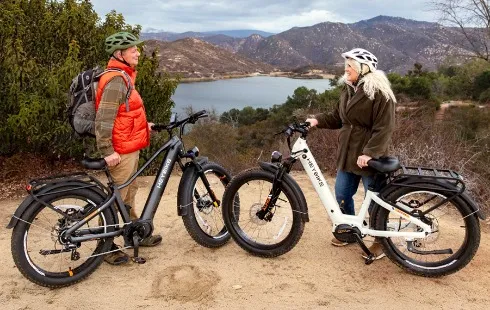
Oktoberfest in the news: How people around see beer's birthday
Section: Arts
By Andrew Porterfield
Until the very late 1800s, a migration of passenger pigeons was a sight to behold. Hundreds of millions of the birds took flight together, their massive living cloud soaring its way up and down eastern North America. When they laid eggs, they did so in hundreds of nests, right next to each other. These traits led to their extinction--they were easy to shoot, delicious to eat. The last passenger pigeon, a female named "Martha," died in 1914. She's preserved at the Smithsonian Institution in Washington, D.C.
Now, many people want to bring Martha and her species back. And not only Martha, but also the great Woolly Mammoth, the European Aurochs, the Dodo, and even the Saber-toothed Tiger. One group, the Long Now Foundation, lists 26 species it believes could be genetically revived.
Restoring a species has received a lot more attention, largely because of new gene sequencing techniques that can provide us with a more accurate string of any species DNA, and because of accelerating rates of extinction of current species (a thousand-fold just in the last half of the 20th century). While some scientists, ethicists, journalists and experts feel that bringing an extinct species will make us appreciate endangered ones that much more, others warn that such returns could be more trouble than they are worth.
How would de-extinction, as many call it, work? Techniques seem to vary according to how long ago the species disappeared:
o Selectively breed living descendants for genetic traits of their now-extinct ancestors, and then breed those ancestors. This is being done with the European Aurochs, which vanished in the 1600s in Poland. DNA from existing cattle is analyzed, and Aurochs DNA isolated from those cattle. Obviously, this only works with relatively recent "extinct" DNA and living descendants.
o Cloning tissue that was frozen from an extinct animal into a close relative, and then selecting the offspring of the now-revived species. Scientists at the University of New South Wales, in Australia, taken cell nuclei--which contain DNA--from preserved gastric brooding frogs, which became extinct in 1983. The nuclei are then inserted into the cells the Great Barred Frog, a relative (the barred frog's nuclei are inactivated).
o Using new sequencing techniques, we may be able to take the genome of a long-extinct species and match it with a living species. If we've sequenced the ancient genome, then we can select DNA in a living species that matches perfectly the DNA of the extinct animal. This would then recreate the extinct species from the living cells of the existing one. This is the technique, introduced by Harvard University geneticist George Church, which is being used for the passenger pigeon.
The sequencing based technique is also being considered for reviving species that have been gone for thousands, perhaps millions of years ago, including the Neanderthals. Dinosaurs will never be part of the picture, however. Researchers at Murdoch University's Ancient DNA Lab found that DNA degrades steadily over time, and that by 6.8 million years, the DNA is pretty much destroyed. Which leaves us quite comfortably within the age of mammals.
But the DNA degradation estimate is far greater than earlier assumptions, which pegged the outside age limit of workable DNA at about 500,000 years old.
Even within the limit of workable DNA, one huge obstacle to reviving species solely from ancient DNA samples is the quality of that old genetic material. Even fresh DNA used in labs worldwide is easily contaminated. DNA is easily altered by ultraviolet light, enzymes, and DNA from the researcher and even adjacent samples. These issues make it challenging enough to ensure pure DNA in a modern experiment, but it can severely hamper working with samples that have been around for thousands or tens of thousands of years--there may not even be enough material to establish a whole genome on a sample that old.
Even if the techniques could revive an ancient animal, should we do it? Could the animal even survive today? Would we want it around? Take the case of the passenger pigeon; these omnipresent birds could strip a stand of trees bare, after devouring leaves and acorns to fuel their migration. They also would leave the ground full of bird dung.
For the Woolly Mammoth, more questions arise. The mammoth's ancestors arrived in North America 1.7 million years ago after crossing the Bering Strait from what is now Russia. We managed to kill the entire species off in just about 1,000 years, bearing not much more than rocks, spears and arrows. The mammoth's habitat was also being eliminated by a warming climate. Finally, Jacquelyn Gill, a postdoctoral fellow at Brown University points out, these animals required hundreds of miles of roaming grounds, and traveled in huge extended families, much like modern elephants. This would not bode well for newly minted mammoths establishing territory within 500 km of Los Angeles, Chicago, or Munich.
The biggest question for de-extinction might not be, would we like to see them? Instead, it should be; would they thrive around us?
Allentoft, M., et al. (2012). The half-life of DNA in bone: measuring decay kinetics in 158 dated fossils. Proc. Royal Soc. B.
http://longnow.org/revive/

Section: Arts

Section: Business

Section: Business

Section: Arts

Section: Health

Section: Arts

Section: News

Section: News

Section: Arts

Section: Business
Health Insurance in Germany is compulsory and sometimes complicated, not to mention expensive. As an expat, you are required to navigate this landscape within weeks of arriving, so check our FAQ on PKV. For our guide on resources and access to agents who can give you a competitive quote, try our PKV Cost comparison tool.
Germany is famous for its medical expertise and extensive number of hospitals and clinics. See this comprehensive directory of hospitals and clinics across the country, complete with links to their websites, addresses, contact info, and specializations/services.
One of the most beautiful squares transforms into a summer stage every year for two days. The Gärtnerplatz Open-Air features a free music and cultural program across three stages, as well as street food from local vendors. On Saturday, the main stage at Gärtnerplatz offers something for everyone,...



No comments yet. Be the first to comment!